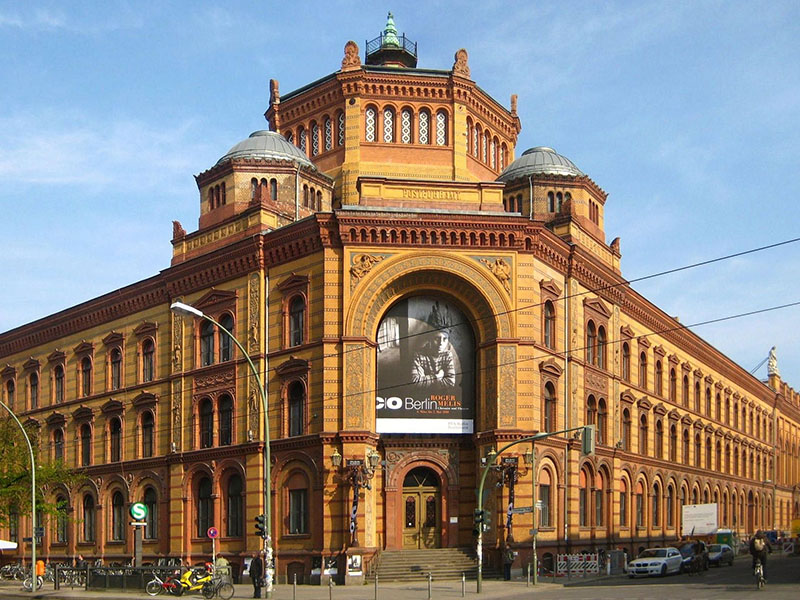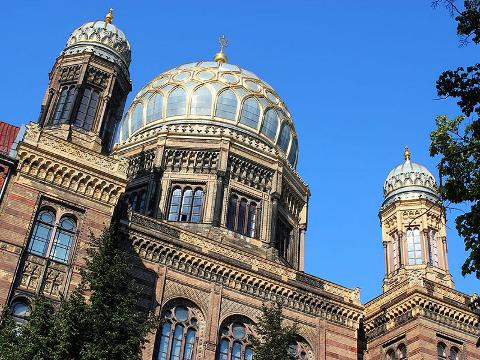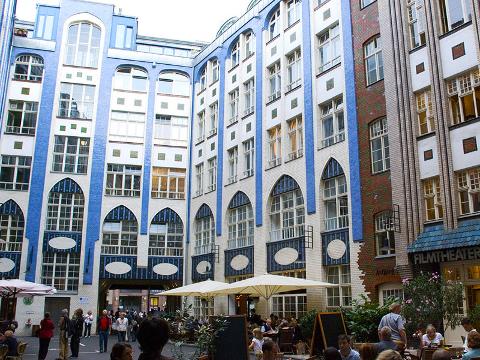Jewish Berlin Small Group Tour - 3 hours




- Duration: 3 Hours (approx.)
- Location: Berlin
- Product code: BLN: JB
Although the Jewish experience in Berlin began in the 13th century, intolerance was so entrenched that it took hundreds of years, until 1714, before Berlin’s first synagogue was erected in Heidereutgasse. Your walk begins at the remaining foundations of the so-called Old Synagogue, where your guide, a Jewish Studies scholar, helps you to grasp the challenges faced by German Jews during the middle ages and renaissance and to appreciate the rich cultural life developed by Berlin’s Jewish community in spite of their vulnerable status.
Our major focus, however, will be the main sites of Berlin’s 19th- and 20th-century Jewish history, the districts of Spandauer Vorstadt and Scheunenviertel (known as the ‘Barn Quarter’) in Berlin-Mitte. Taking in the graceful avenue, Oranienburger Straße, where the magnificent New Synagoge was erected in 1866, you learn not only of the conflicts between German Jews and Non-Jews but of tensions between the mostly assimilated German Jewry and the so-called Eastern Jews (‘Ostjuden’) who filled Berlin in the 1920s after fleeing dramatic anti-Jewish violence in their homelands.
Many of these refugees were orthodox and poor. They brought a completely new infrastructure for Jewish religious and cultural life to Berlin with them. Examining visual material such as photographs from Jewish street vendors and old newspapers, we consider how Jewish life in Berlin became far more visible in the 1920s. For precisely this reason, the established German Jewish community often regarded the influx of Eastern Jews as potentially dangerous for their own status within German society. One response was their support for institutions of social welfare and education. We stop at an example of this philanthropy, the former Jewish orphanage in Auguststraße, which today is home to an exhibit hall and a coffee shop. (If the current exhibition is dealing with a topic related to our tour, a visit of the exhibition should be taken into consideration.). The Jewish Cemetery on Große Hamburger Straße also gives a vivid impression of Berlin’s Jewish presence.
Assimilated Jews in Berlin played leading roles in every field of German culture: journalism, education, science, literature, art, music, business. During the short, anxious Weimar era (1919-1933), the great painter Max Liebermann created his works and became head of the Berlin Secessionists. Kurt Weill redefined musical theater. Walter Benjamin penned the whimsical academic essays that inaugurated a philosophy of modernity. Despite the prominence of such figures, anti-Semitic violence of a new degree broke out as early as November 1923. In front of the former Labor Office in Gormannstraße, we talk about the so-called Scheunenviertel Pogrom. By 1933, the ‘Barn Quarter’ became one of the first settings of the Nazis’ political purges in the capital city. We discuss the series of sinister events that lead to full implementation of Hitler’s “Final Solution” in Berlin while visiting sites that recall the Holocaust, such as the Missing House graphic at Grosse Hamburger Strasse 15/16, which lists the names of former Jewish residents and the Abandoned Room at Koppenplatz, which memorializes the Jews taken on the November 1938 Kristallnacht, and some of the city’s 1,400 Stolpersteine (stumbling cobblestones), reminders of the Shoah’s victims.
Before leaving the ‘Barn Quarter,’ we visit the kosher coffee shop ‘Beth-Café’ to consider the renewal of Berlin’s Jewish life today. Our last stop is the New Synagoge, the architecture of which symbolized and celebrated Jewish assimilation in Germany. It is thus one of the most moving sites on our walk. Today it is home to the Jewish community reviving in Berlin, and moreover houses a gallery with changing exhibitions that you may wish to visit in conclusion.

